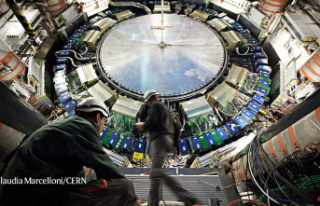Is the transperineal route or the transrectal route more effective for prostate biopsy?
Current clinical trials are being conducted by urologists to determine if transperineal prostate biopsy is safer and more effective in detecting more serious prostate cancers. Although several new studies were presented at the European Association of Urology 2022 Congress, they did not provide any definitive answers. However, experts seemed to favor the transperineal approach.
For example, one study identified similar detection rates, but transperineal was more reliable in safety. Another study showed that transrectal detected significantly more clinically important cancers than transperineal.
Renee Hogenhout and her colleagues discovered that transperineal biopsy had comparable clinically significant rates of prostate cancer detection to transrectal biopsy using MRI-transrectal ultra-guided (TRUS fusion).
Hogenhout and his colleagues compared the complication and ability to detect cancer in clinically significant tumors of 790 men with active surveillance or clinical suspicion of prostate carcinoma.
The detection rates of clinically important prostate cancers in clinically suspect men was not significantly different between transrectal and transperineal routes. This is true for men with clinical suspicion of the disease (59% vs 58%) and men on active surveillance with elevated disease (44% vs 38%).
Hogenhout, from the Erasmus University Medical Center Rotterdam, Netherlands, stated that the transperineal route was preferable due to the lower infectious complications.
Andreia Bile Silva, MD from the Hospital de Egas Moniz, Lisbon, Portugal, and her colleagues assessed the effectiveness of the transperineal approach in a second study.
Researchers conducted an in-office trial of freehand transperineal prostate biopsies with patients who were under local anesthesia. There was no need for antibiotic prophylaxis. The total number of participants was 108 with a median prostate-specific antigen (PSA), level of 7.7ng/mL.
Prostate cancer was detected in 67 of the patients and 42 cases were diagnosed as clinically significant. The median positive core length was 60% and the mean number of positive cores was 35%.
Positive results were obtained for 61% of patients who had anterior zone cancers. 38% of these patients were not clinically significant.
One complication that required emergency department visits was a case involving a febrile urinary tract infection resulting in acute urinary retention. Only three patients reported discomfort from anesthesia infiltration, or the introduction of the ultrasound transducer. The global pain scores were only 3 on a 10-point scale. This indicates only mild discomfort.
However, not everyone agrees that the transperineal approach should prevail.
James Kovacic MD, a urology researcher at the Royal North Shore Hospital, Sydney, Australia and his colleagues used prospectively collected data from one surgeon database to compare the methods. Patients under general anesthesia were able to have transperineal biopsies done, while patients receiving TRUS biopsies under local anesthesia were able to have them done under transperineal biopsies.
There were 708 preoperative multiparametric MRI patients. 261 of these men had transperineal and 447 had transrectal biopsies.
Researchers found no difference in the detection rate of prostate cancer between the two groups (77.9% with TRUS vs. 77.4% transperineal).
The transrectal technique was able to identify significantly more cancers with an International Society of Urological Pathology score of at least 2 (59.1% vs. 45.6%; P =.006).
The researchers also found no difference between the two groups in terms of complication rates, with each group averaging 6%.
According to the authors, "TRUS biopsy" is still a reliable and accurate tool for diagnosing prostate cancer.
Roderick van der Bergh, MD, co-moderator of the oral abstract, stated that there are many factors to consider when comparing biopsy techniques and choosing the right patient.
Van den Bergh, a Dutch urologist at St. Antonius Hospital, Utrecht, stated that the infection rate is one reason why some guidelines now recommend transperineal biopsies.
He pointed out that the rates of infection complications can vary greatly, with younger patients experiencing lower rates of infection using transrectal approaches. These rates are comparable to those with transperineal approaches.
Van den Bergh stated, "But I believe that in an 80 year-old diabetic patient the benefit of a transperineal biopsies is much greater."
Transperineal procedures have other benefits. They are easy to do and patients don't need to take antibiotics. This may make them more attractive overall. He concluded that the most important thing about both procedures is the use MRI.
All of the studies presented here were internally funded. Van den Bergh and all authors have not disclosed any financial relationships.
Congress 2022 of the European Association of Urology (EAU). Abstracts A0603, A0604 (Bile Silvi), and A0605 (Kovacic). Presented July 3, 2022.
Neil Osterweil is an award-winning journalist in the medical field and a regular contributor to Medscape.
Follow us on Twitter or Facebook to get more information about Medscape Oncology












